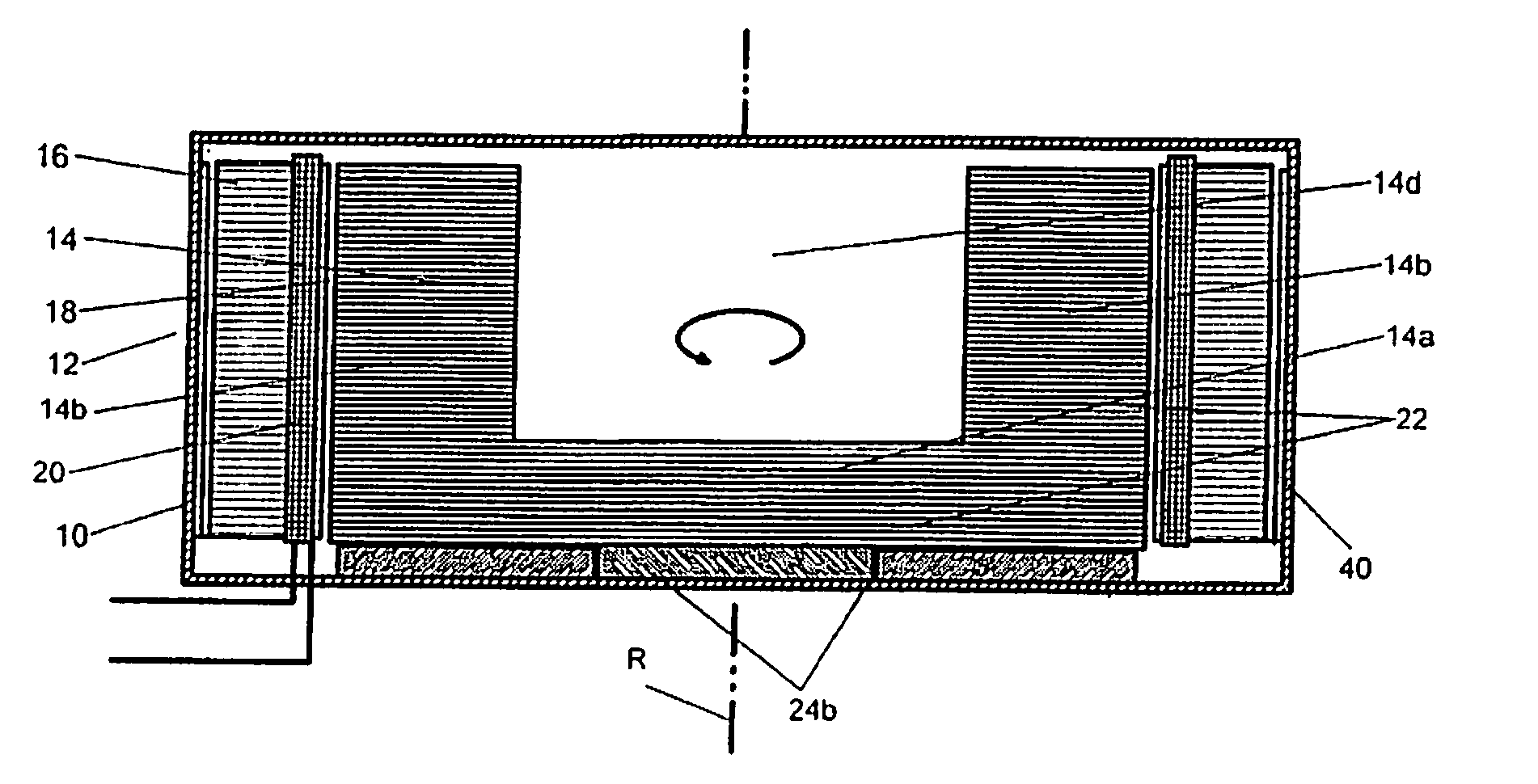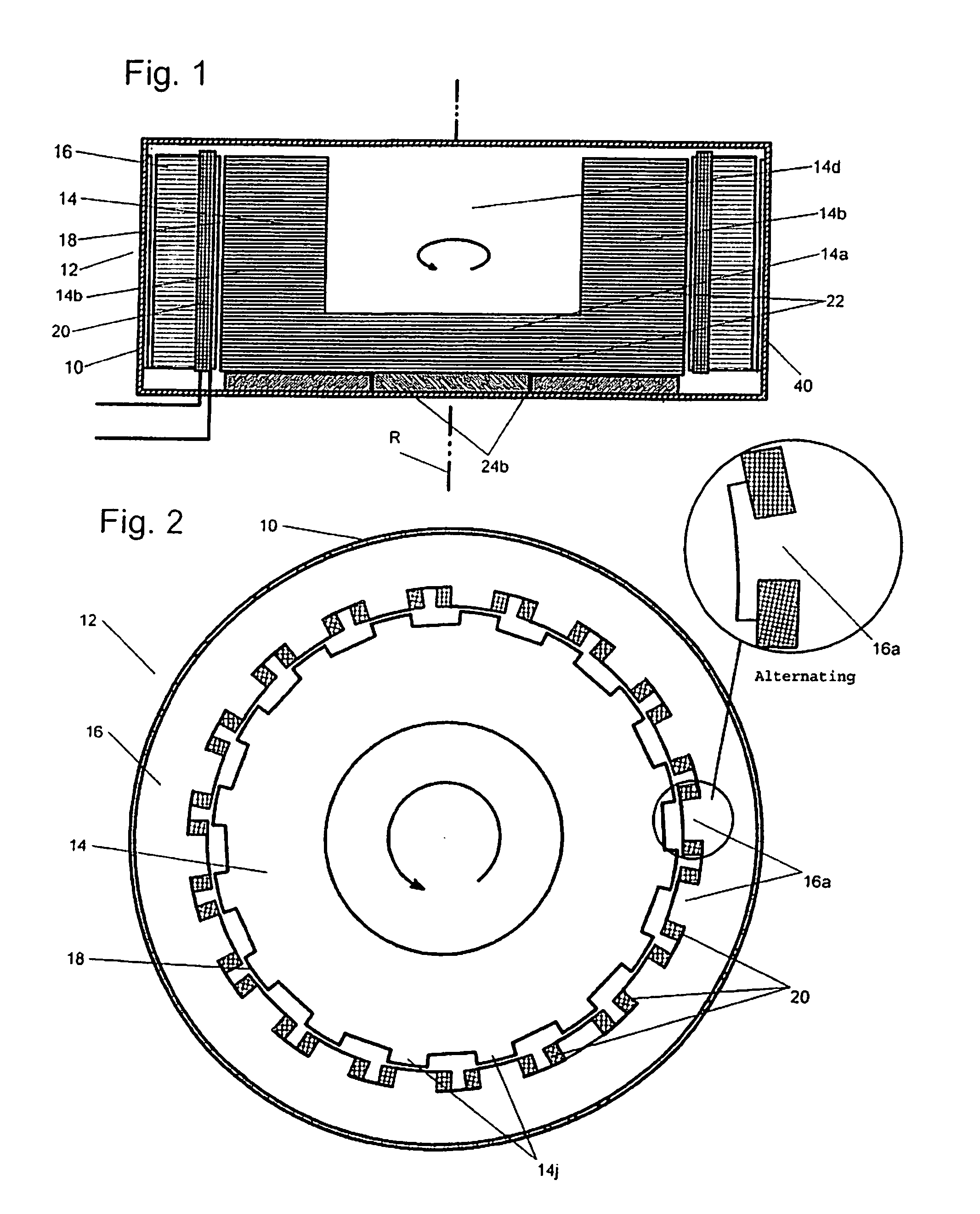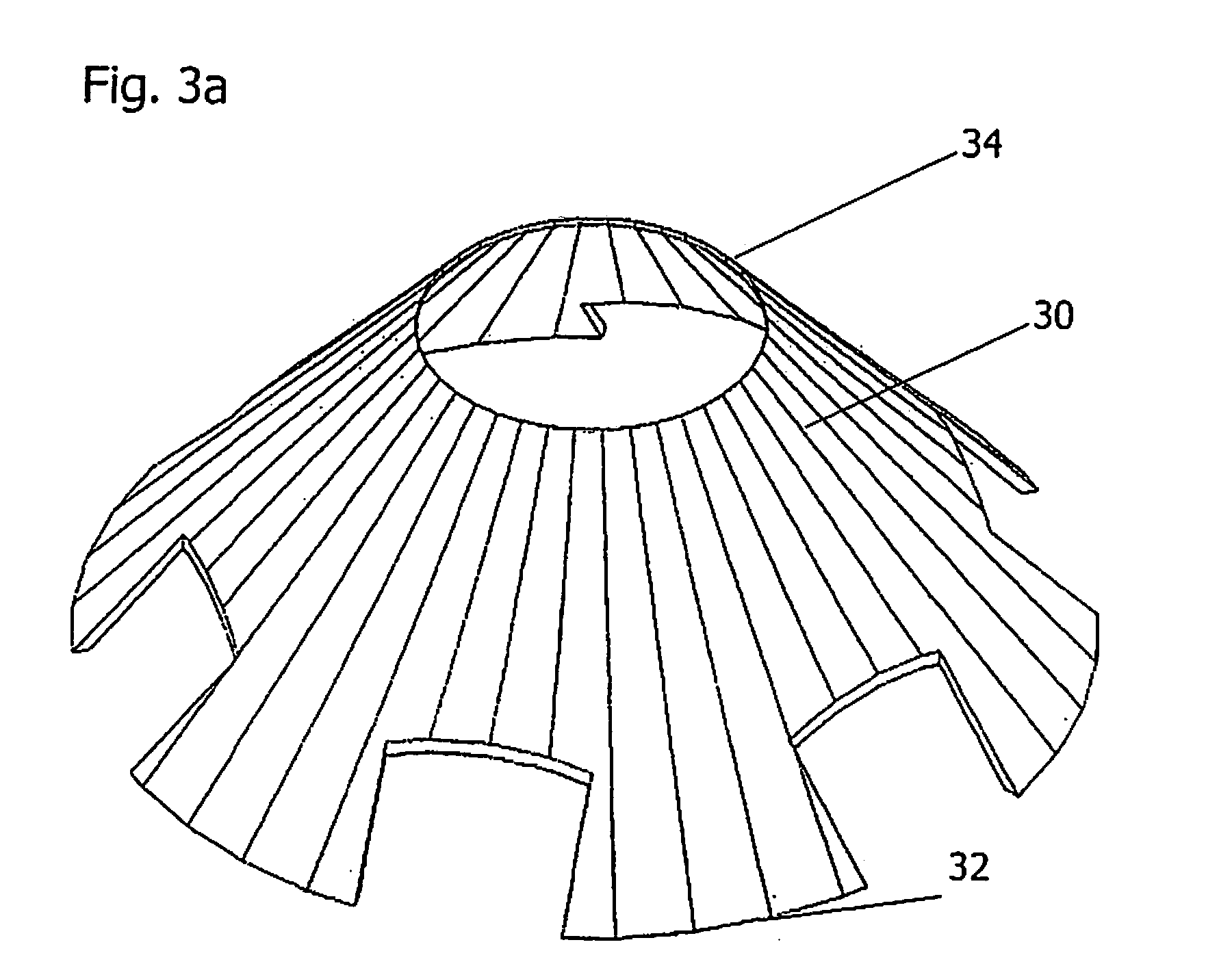Energy accumulator comprising a switched reluctance machine
a technology of energy accumulator and switch, which is applied in mechanical energy handling, electrical apparatus, support/enclose/case, etc., can solve the problems of limiting the rotational speed of the energy storage device, increasing the stress, and increasing the tensile stress in the central and inner surfaces, so as to achieve the effect of increasing the rotational speed of the rotor
- Summary
- Abstract
- Description
- Claims
- Application Information
AI Technical Summary
Benefits of technology
Problems solved by technology
Method used
Image
Examples
Embodiment Construction
[0034]Shown in FIGS. 1 and 2 is an energy storage device that is arranged in a closed, circular-cylindrical, shear-resistant housing 10. Accommodated in the housing 10 is an electrical machine 12 in the form of a switched reluctance machine that comprises a rotor 14 and a stator 16. Details of the reluctance machine are explained further below. The stator 16 is separated from the rotor 14 by an air gap 18, and has a multiplicity of stator coils 20, which are assigned, respectively, to a stator tooth 16a. The rotor 14 is surrounded by the stator 16 and has a substantially pot-shaped form, having a base part 14a and a substantially annular-cylindrical wall part 14b. Further, assigned to the rotor 14 in a structurally integral manner is a fly-mass 22, which, together with the rotor 14, constitutes a rotating body. In the example shown, this fly-mass 22 is constituted in that the base part 14a and the annular-cylindrical wall part 14b are composed of significantly more material than wou...
PUM
 Login to View More
Login to View More Abstract
Description
Claims
Application Information
 Login to View More
Login to View More - R&D
- Intellectual Property
- Life Sciences
- Materials
- Tech Scout
- Unparalleled Data Quality
- Higher Quality Content
- 60% Fewer Hallucinations
Browse by: Latest US Patents, China's latest patents, Technical Efficacy Thesaurus, Application Domain, Technology Topic, Popular Technical Reports.
© 2025 PatSnap. All rights reserved.Legal|Privacy policy|Modern Slavery Act Transparency Statement|Sitemap|About US| Contact US: help@patsnap.com



